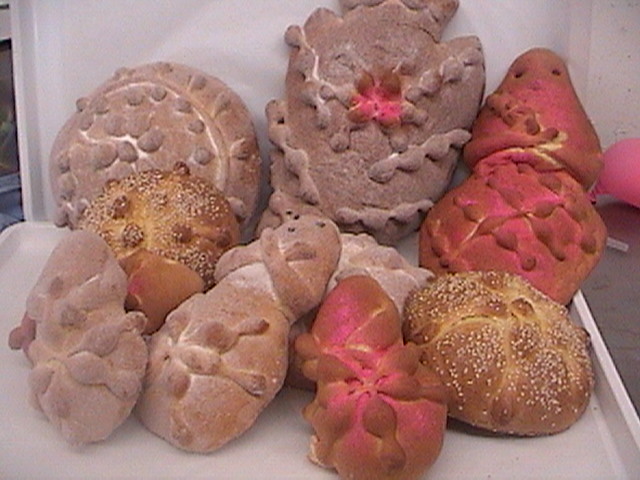Pan de Muerto – Teach Me More!

You might be just as surprised as I was to find out Dia de Los Muertos seems to build for about a month leading up to All Souls Day, not just the day itself. I suppose this is not unlike any commercialized holiday anywhere? There are things to buy and altars to dress.
Like any migratory pattern that heralds a new season, the arrival of pan de muerto in bakeries signals that the celebration has begun. It’s not just sugar skull face painting and Frida flowers in your hair.
Most of us Americans seem to have a vague understanding of remembering our dearly departed and honoring their memory in different ways. Catholics in particular are well acquainted with honoring their loved ones gone to the next life.
But the more I read about this particular pastry bread the less I seem to find a definitive answer of its history and its significance. However, everything I’ve read makes this tradition even more intriguing.
Some sources trace its provenance back to the Conquest era, the bread reminiscent of the still-beating heart of pre-Hispanic sacrificed virgins. The conquistadores supposedly rejected these sacrifices to pagan gods but made the bread with sugar dyed red to symbolize the blood of the fair maidens. Other sources cite mixing the blood of sacrificed innocents with the dough itself.
The ingredients evolved from amaranth to wheat and the shape of the bread changed as it evolved from an offering to idols to the bread sold everywhere from grocery stores to street corners to pop-up vendors at national parks.
The strips of dough now criss-crossing the top are said to represent the bones of the deceased with the small cap of dough in the center symbolizing the cranium. The breads are apparently classified by different styles depending on what they represent- anthropomorphic, zoomorphic and phytomorphic as they alternately resemble people, animals or plants.

Both the names for the bread – muertos, ofrenda, pan de hule, huesos, gorditas de maiz – and the ingredients vary throughout the country and within regions.
Sweet or savory, sugar or sesame seeds, wheat or masa, if you’re feeling ambitious and want to make this traditional bread at home, here is a delightful video that makes the various stages of the baking process seem absolutely achievable.